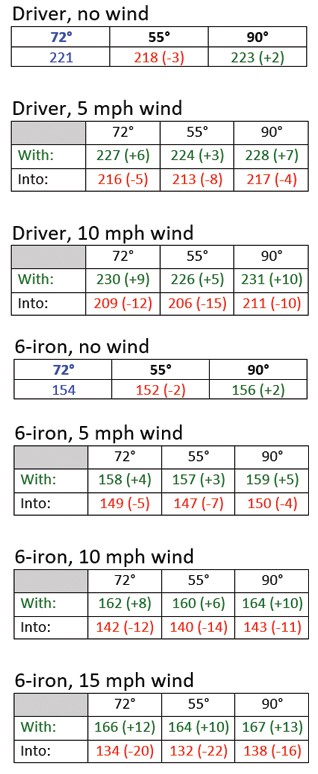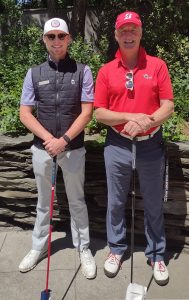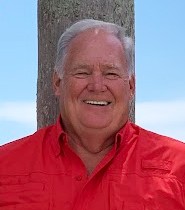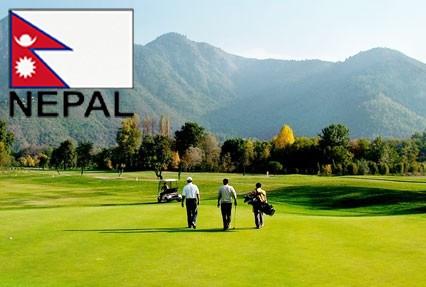Blog
WGTF News – New Website Up And Running
 Last month, we announced the new World Golf Teachers Federation website was up and running. We encourage all members to visit the site, which has been updated with a modern look and feel. The website was redesigned to better reflect the unity and cooperation among the members nations of the WGTF. News about the WGTF, a member search function and a list of the WGTF’s Top 100 Teachers are some of the featured content. Please visit www.WGTF.com and see what the buzz is all about!
Last month, we announced the new World Golf Teachers Federation website was up and running. We encourage all members to visit the site, which has been updated with a modern look and feel. The website was redesigned to better reflect the unity and cooperation among the members nations of the WGTF. News about the WGTF, a member search function and a list of the WGTF’s Top 100 Teachers are some of the featured content. Please visit www.WGTF.com and see what the buzz is all about!
Tournament Central
Inside The USGTF – Share Your Story
 USGTF members have achieved incredible success in the 32 years since the inception of the organization in all facets of the golf business. We have highlighted these stories over the years, and through our monthly e-newsletter, we want to give more prominence to those members who have done remarkable things with their membership and their careers.
If you would like to be featured in an upcoming e-newsletter, please SHARE YOUR STORY through our online contact page at www.USGTF.com/contact.
USGTF members have achieved incredible success in the 32 years since the inception of the organization in all facets of the golf business. We have highlighted these stories over the years, and through our monthly e-newsletter, we want to give more prominence to those members who have done remarkable things with their membership and their careers.
If you would like to be featured in an upcoming e-newsletter, please SHARE YOUR STORY through our online contact page at www.USGTF.com/contact.
Entry Deadline This Month For U.S. Cup
 September 20th is the deadline to enter this year’s United States Golf Teachers Cup, to be held Monday and Tuesday, October 18-19, at Revere Golf Club in Henderson, Nevada, just outside Las Vegas. A concurrent pro-am will be held for USGTF participants who bring an amateur partner. The entry fee of $495 per person includes two rounds of tournament golf, range balls before play, prizes, an awards ceremony and a closing luncheon. To enter, please visit www.USGolfTeachersCup.com or call the USGTF National Office at (772) 888-USGTF. We look forward to seeing you at our 25th annual event!
September 20th is the deadline to enter this year’s United States Golf Teachers Cup, to be held Monday and Tuesday, October 18-19, at Revere Golf Club in Henderson, Nevada, just outside Las Vegas. A concurrent pro-am will be held for USGTF participants who bring an amateur partner. The entry fee of $495 per person includes two rounds of tournament golf, range balls before play, prizes, an awards ceremony and a closing luncheon. To enter, please visit www.USGolfTeachersCup.com or call the USGTF National Office at (772) 888-USGTF. We look forward to seeing you at our 25th annual event!
Editorial – Wind, Temperature and The Open
 By Mark Harman
Normally at The Open in the United Kingdom, wind, temperature and rain play a role on at least one of the days. But this past July at Royal St. Georges in the southeast of England, blue skies and calm winds ruled all four days. How much of an effect does wind and temperature have on the playing of our game?
Using Foresight Sports’ GC Quad and simulation technology, we can provide somewhat of an answer. The example here is a golfer who hits the ball slightly longer than the average male golfer. Into a 10 mph wind, a golfer can expect to lose approximately 12 yards of carry distance with a driver, while downwind the gain is about 9 yards. At the professional level these yardages are both going to be slightly to somewhat longer. Of course, a lot depends upon the launch angle and spin rate of the drive, too, but in general these numbers are going to be pretty much what we see. You can also see that a headwind has a slightly greater effect on distance than does a trailing wind.
Let’s use a 6-iron as an example. Into a 10 mph wind, the loss of carry distance will be about 12 yards, while downwind the gain will be about 8 yards. Into a 15 mph headwind, the distance loss from no wind is 20 yards, and the gain from a 15 mph trailing wind increases only 4 yards to 12 yards total. Again, this is further proof a headwind affects ball flight to a greater degree than does a trailing wind.
What about temperature? According to the technology, the difference in carry distance between a drive hit in 55° F and 90° F is only about 5 yards. So that doesn’t seem very significant. The difference in 6-iron carry varies only 4 yards, although at the higher skill levels a good player will notice this. Wind and temperature are elements that do affect the playing of the game and offer unique challenges on their own. Tom Watson embraced the challenge while other professionals loathed it. Our mental attitude towards different conditions undoubtedly play a greater role in our playing success or failure than do the actual conditions themselves.
By Mark Harman
Normally at The Open in the United Kingdom, wind, temperature and rain play a role on at least one of the days. But this past July at Royal St. Georges in the southeast of England, blue skies and calm winds ruled all four days. How much of an effect does wind and temperature have on the playing of our game?
Using Foresight Sports’ GC Quad and simulation technology, we can provide somewhat of an answer. The example here is a golfer who hits the ball slightly longer than the average male golfer. Into a 10 mph wind, a golfer can expect to lose approximately 12 yards of carry distance with a driver, while downwind the gain is about 9 yards. At the professional level these yardages are both going to be slightly to somewhat longer. Of course, a lot depends upon the launch angle and spin rate of the drive, too, but in general these numbers are going to be pretty much what we see. You can also see that a headwind has a slightly greater effect on distance than does a trailing wind.
Let’s use a 6-iron as an example. Into a 10 mph wind, the loss of carry distance will be about 12 yards, while downwind the gain will be about 8 yards. Into a 15 mph headwind, the distance loss from no wind is 20 yards, and the gain from a 15 mph trailing wind increases only 4 yards to 12 yards total. Again, this is further proof a headwind affects ball flight to a greater degree than does a trailing wind.
What about temperature? According to the technology, the difference in carry distance between a drive hit in 55° F and 90° F is only about 5 yards. So that doesn’t seem very significant. The difference in 6-iron carry varies only 4 yards, although at the higher skill levels a good player will notice this. Wind and temperature are elements that do affect the playing of the game and offer unique challenges on their own. Tom Watson embraced the challenge while other professionals loathed it. Our mental attitude towards different conditions undoubtedly play a greater role in our playing success or failure than do the actual conditions themselves.
Product Spotlight – Cobra Golf
 Cobra Golf, a longtime industry partner of the USGTF, features products and innovations that are among the best in the business. With brand ambassadors such as Rickie Fowler, Lexi Thompson and Bryson DeChambeau, Cobra has a significant following and an identity that makes it among the most “hip” of brands.
Cobra offers all USGTF members in good standing a 20% personal use discount off the wholesale price on all its products. To take advantage of this offer, inquiries on pricing should be directed to Member_Services@usgtf.com.
Cobra Golf, a longtime industry partner of the USGTF, features products and innovations that are among the best in the business. With brand ambassadors such as Rickie Fowler, Lexi Thompson and Bryson DeChambeau, Cobra has a significant following and an identity that makes it among the most “hip” of brands.
Cobra offers all USGTF members in good standing a 20% personal use discount off the wholesale price on all its products. To take advantage of this offer, inquiries on pricing should be directed to Member_Services@usgtf.com.
Student Spotlight – Jonathan Giammatteo
 By Johnny McCosker, USGTF Professional
My student spotlight story goes back to Lakeland, Florida, where one of my students was Jonathan Giammatteo. He was a 5-year-old that his parents brought to me for his swing training and grooming. He showed a knack and talent for the swing and wanted to improve. We worked together for several years, and it was always a joy to work with him.
As he grew up, he pursed different interests, and basketball was one of them. After several years, Jonathan came back into my golf life in 2016. He began to compete in some local golf tournaments and we re-engaged in some teaching. He decided to go all-in for golf and was accepted to the Florida Gulf Coast University in the Golf Management program. The Quechee Club hires seasonal professionals in order to help out in the summer months. I wrote a note to the director of golf at the club and recommended that he hire Jonathan as an intern for this summer. So, now it’s come full circle, and Jonathan is now currently working at The Quechee Club. It is so nice to see him grow into a fine young man and we get to see each other.
Jonathan grew into a very accomplished golfer. As a junior golfer he obtained multiple wins, including the junior club championship at Grasslands Golf and Country Club, and the Schalamar Creek Junior Championship. He also finished with a T-2 at the Junior Citrus Open. While in pursuit of his PGA card, he passed his PGA playing ability test with scores of 78-74. In September of 2021, he plans to change the script for amateur golfers and turn pro at the age of 19 and play professionally in Florida while in college. During his time as an intern at the Quechee Club, Jonathan has been able to grow as an upcoming professional learning to play on different grasses and in different conditions than what he is used to in Florida.
By Johnny McCosker, USGTF Professional
My student spotlight story goes back to Lakeland, Florida, where one of my students was Jonathan Giammatteo. He was a 5-year-old that his parents brought to me for his swing training and grooming. He showed a knack and talent for the swing and wanted to improve. We worked together for several years, and it was always a joy to work with him.
As he grew up, he pursed different interests, and basketball was one of them. After several years, Jonathan came back into my golf life in 2016. He began to compete in some local golf tournaments and we re-engaged in some teaching. He decided to go all-in for golf and was accepted to the Florida Gulf Coast University in the Golf Management program. The Quechee Club hires seasonal professionals in order to help out in the summer months. I wrote a note to the director of golf at the club and recommended that he hire Jonathan as an intern for this summer. So, now it’s come full circle, and Jonathan is now currently working at The Quechee Club. It is so nice to see him grow into a fine young man and we get to see each other.
Jonathan grew into a very accomplished golfer. As a junior golfer he obtained multiple wins, including the junior club championship at Grasslands Golf and Country Club, and the Schalamar Creek Junior Championship. He also finished with a T-2 at the Junior Citrus Open. While in pursuit of his PGA card, he passed his PGA playing ability test with scores of 78-74. In September of 2021, he plans to change the script for amateur golfers and turn pro at the age of 19 and play professionally in Florida while in college. During his time as an intern at the Quechee Club, Jonathan has been able to grow as an upcoming professional learning to play on different grasses and in different conditions than what he is used to in Florida.
Teaching “PRO” File – Jerry Ellstrom
 For USGTF member Jerry Ellstrom from Port St. Lucie, Florida, golf was not something that has always been present in his life, but today it is a passion of his, especially when it comes to teaching. He conducts three clinics per week and his average clientele is ages 65 and over.
“We are going about it the wrong way in trying to focus on junior golfers,” Ellstrom believes. “There are 10,000 people who retire every day and they want to learn to play golf. They have disposable income, These are the people we should be focusing on.”
Ellstrom’s golf career started in 1972 after he got out of the Army, and he wanted to learn to play the game. He received lessons from Jimmy Clark, a two-time winner on the PGA Tour. Ellstrom took lessons from Clark for five years, but what was remarkable is that only a year after taking up the game, Ellstrom had a plus handicap. to achieve this, he hit 700 range balls most days in addition to chipping and putting. But he never entertained thoughts of being a touring professional. Instead, he entered the business world, running worldwide distribution sales for a semi-conductor company. He quit playing golf for around 20 years, and upon retirement looked for a new career. He entered Keiser University where he learned to teach golf under five Top 100 instructors. He later found the USGTF when he happened upon the National Office which was then in Port St. Lucie.
Ellstrom estimates he has given 7,000 lessons the past 10 years and enjoys it immensely. He believes an older teacher’s greatest asset is the ability to communicate, and he takes what a student has and makes it better. His lasting desire is this: “I have a desire to pay it forward for people to teach the game.”
For USGTF member Jerry Ellstrom from Port St. Lucie, Florida, golf was not something that has always been present in his life, but today it is a passion of his, especially when it comes to teaching. He conducts three clinics per week and his average clientele is ages 65 and over.
“We are going about it the wrong way in trying to focus on junior golfers,” Ellstrom believes. “There are 10,000 people who retire every day and they want to learn to play golf. They have disposable income, These are the people we should be focusing on.”
Ellstrom’s golf career started in 1972 after he got out of the Army, and he wanted to learn to play the game. He received lessons from Jimmy Clark, a two-time winner on the PGA Tour. Ellstrom took lessons from Clark for five years, but what was remarkable is that only a year after taking up the game, Ellstrom had a plus handicap. to achieve this, he hit 700 range balls most days in addition to chipping and putting. But he never entertained thoughts of being a touring professional. Instead, he entered the business world, running worldwide distribution sales for a semi-conductor company. He quit playing golf for around 20 years, and upon retirement looked for a new career. He entered Keiser University where he learned to teach golf under five Top 100 instructors. He later found the USGTF when he happened upon the National Office which was then in Port St. Lucie.
Ellstrom estimates he has given 7,000 lessons the past 10 years and enjoys it immensely. He believes an older teacher’s greatest asset is the ability to communicate, and he takes what a student has and makes it better. His lasting desire is this: “I have a desire to pay it forward for people to teach the game.”
WGTF News From Nepal
 In comparison to previous years, the game of golf has been advanced in recent years. People of all ages are now interested in the game these days. I’ve been a golf professional at RNGC (Royal Nepal Golf Club) for a long time, and according to my study, the club has gained many new members this year compared to last. In Nepal’s history, one of the schools has also adopted golf as one of their regular sports, which means that the golf game of our students will be much more knowledgeable and improved in the future, and the interest in the game will be enhanced among the youth. Despite the fact that we are currently under lockdown, we can find golf players engaged in indoor net practice. Knowing about the indoor practice, we can conclude that the players’ commitment to golf is exceptional.
RNGC has decided to focus more on the underprivileged in the junior program and provide them with more practice sessions. The underprivileged group is made up of ten boys and ten girls. Many government officers, including members of the Armed Police Force, Nepal Police, the Nepal Army and Nepal Ministers, are now interested in golf. As interest among government personnel grows, we are expecting to receive some support from the country in the near future. Despite the fact that we lack a source of funding and government support for golf, I will continue to work hard to grow and increase interest in the sport in Nepal. Finally, I’d like to express my gratitude to all of the USGTF and WGTF members who have supported me during my journey.
By Sachin Bhattari, WGTF Advisory Board Member, Nepal
In comparison to previous years, the game of golf has been advanced in recent years. People of all ages are now interested in the game these days. I’ve been a golf professional at RNGC (Royal Nepal Golf Club) for a long time, and according to my study, the club has gained many new members this year compared to last. In Nepal’s history, one of the schools has also adopted golf as one of their regular sports, which means that the golf game of our students will be much more knowledgeable and improved in the future, and the interest in the game will be enhanced among the youth. Despite the fact that we are currently under lockdown, we can find golf players engaged in indoor net practice. Knowing about the indoor practice, we can conclude that the players’ commitment to golf is exceptional.
RNGC has decided to focus more on the underprivileged in the junior program and provide them with more practice sessions. The underprivileged group is made up of ten boys and ten girls. Many government officers, including members of the Armed Police Force, Nepal Police, the Nepal Army and Nepal Ministers, are now interested in golf. As interest among government personnel grows, we are expecting to receive some support from the country in the near future. Despite the fact that we lack a source of funding and government support for golf, I will continue to work hard to grow and increase interest in the sport in Nepal. Finally, I’d like to express my gratitude to all of the USGTF and WGTF members who have supported me during my journey.
By Sachin Bhattari, WGTF Advisory Board Member, Nepal


